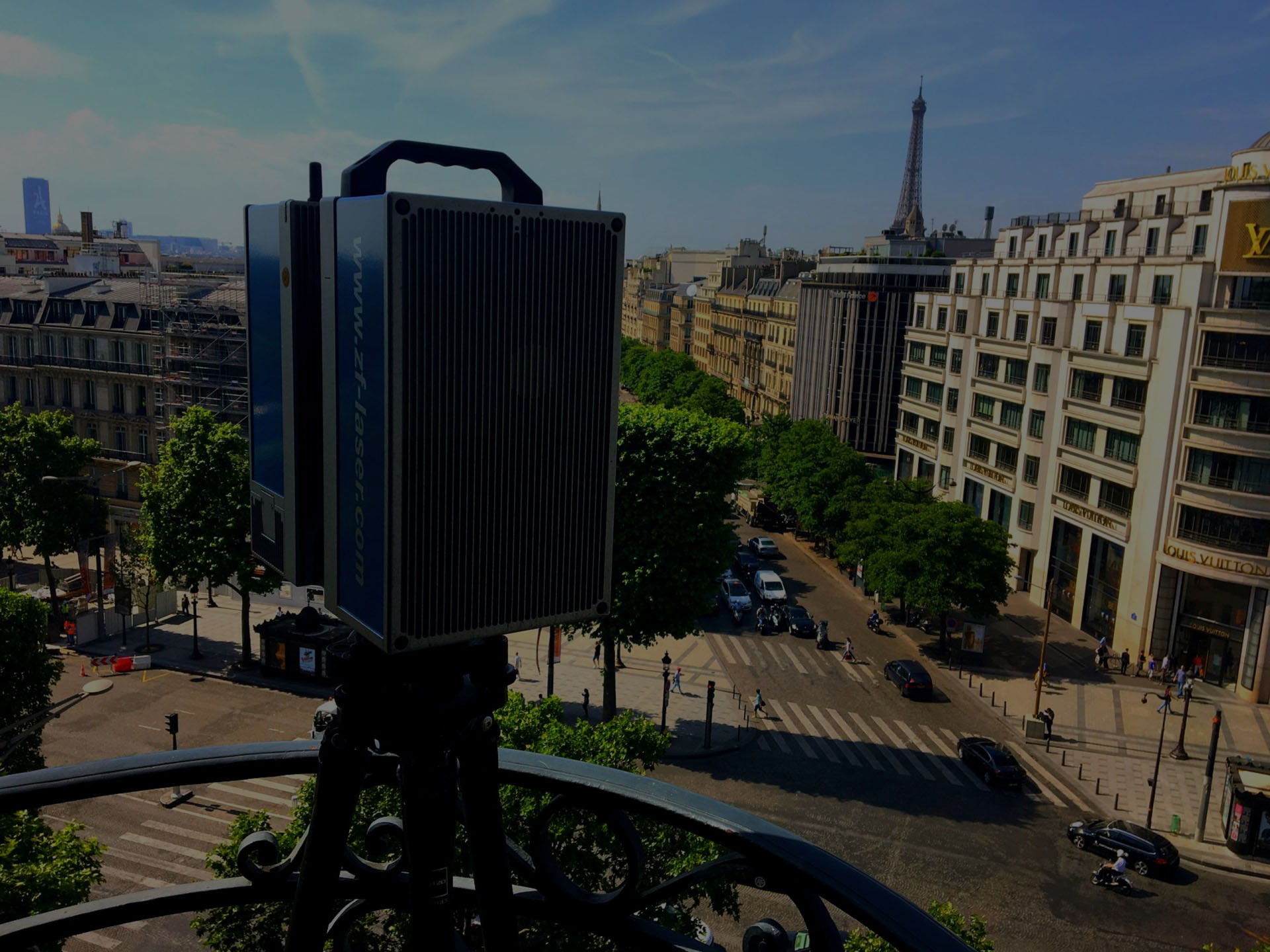
How does it work a 3D Laser Scanner
October, 1st, 2019
Topic: Laser Scanner
( 5 min read )
In the last few years, in the survey and metrology sector, 3D Laser Scanners have appeared, key tools for acquiring geometric information for various sectors and for different fields of application.
This technology has enormously speeded up the phase of acquiring 3D coordinates that define the geometries of a detected object, be it a building or a plant, executed by scanning the space and acquiring point clouds at a speed that reaches today up to a million points per second.
But how does a 3D laser scanner work?
Basic principles (Flight time and phase difference)
The basic principle is the emission of a light signal (Laser) by an emitter and the reception of the return signal by a receiver. In the reception phase the scanner uses different techniques for calculating the distance that distinguish the type of instrument.
According to the technique used, the 3D laser scanners are defined as ‘flight time’ (TOF) when they calculate the distance based on the time elapsed between the emission of the laser and the reception of the return signal, or to ‘phase difference’ (Phase shift based) when the calculation is performed by comparing the phases of the emitted signal and the return signal.
Most scanners on the market today are of the two types described, although there are also so-called ‘atriangulation’ scanners. An example of a time-of-flight scanner is the Leica P40, while phase-difference scanners are the Z + F 5010X and the Faro Focus X330.
The emitter is mounted on a body that rotates around a vertical axis that contains a mirror, in turn rotating on its horizontal axis, which has the function of reflecting the laser and directing it towards the point detected. The movement of the body and the mirror occur at very high speeds, allowing the acquisition of data at a speed that can reach up to a million points per second.
Setting the scan parameters
The speed and the step of the rotations can be set by the operator, who acting on these parameters determines the resolution of the scan, that is the density of the grid of points detected at a certain distance, and the quality of the acquired data, typically higher for slower rotations. The two parameters therefore also determine the duration of the scan, which can vary from about thirty seconds up to a few tens of minutes for complete 360 ° scans.
During acquisition, the instrument stores, for each point surveyed, the calculated distance and the horizontal and vertical angles based on the position of the body and the mirror. In addition to this information, the reflectance value of the surface hit by the laser is also acquired, which will be as high as the surface will tend to be white.
However, there are many other aspects that must be considered to establish the quality of a laser scanner instrument and above all, for the detection of a particular object:
- acquisition speed;
- scanning resolution and divergence of the laser beam;
- nominal and effective flow rate;
- measuring range;
- acquisition of the received signal strength (reflectivity);
- automatic signal recognition;
- RGB acquisition (internal or through external devices);
- operational autonomy of the instrument;
- handling;
- ease of use and presence of data acquisition and management software.
Acquisition of 360 ° panoramic images
Now all the most modern 3D laser scanners are equipped with an integrated digital camera which, after the geometric data acquisition phase, is used through automatic procedures for acquiring images of the detected space. The photos thus acquired will be subsequently mosaic by the data processing software provided by the manufacturers (Cyclone for Leica, Laser Control for Z + F and Scenes for Faro) and applied to point clouds to enrich them with color information.
Conclusions
The final result will be a cloud of 3D points (3D Point Cloud) in color, representing the three-dimensional space around the scanning point, characterized by a high accuracy, which can be used to extract 2D and / or 3D representations.

2 thoughts on “How does it work a 3D Laser Scanner?”
Great post about how 3D laser scanners work. This new technology has already been an advantage in many aspects! Thanks for sharing.
Thankyou Lauren,
yes it is an advantage to use 3d laserscanner, whatever the market you are working in.